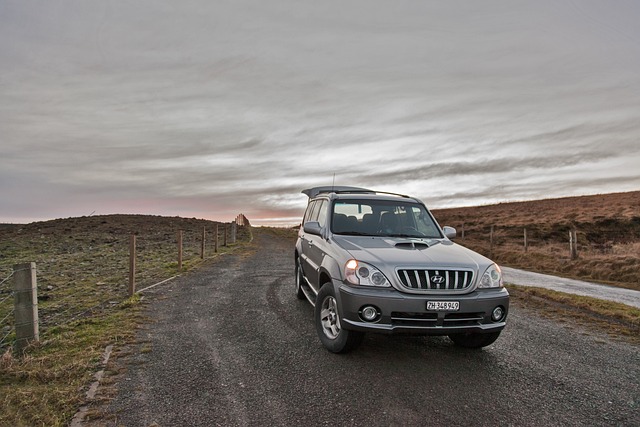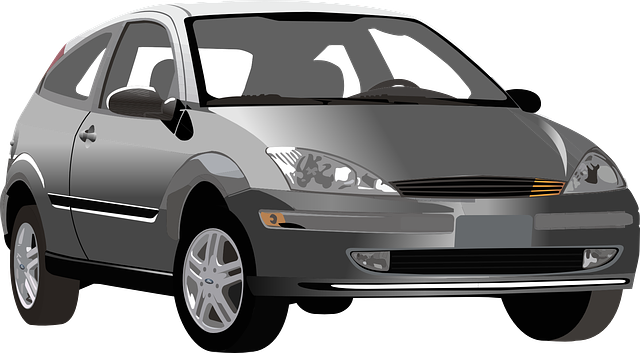Auto insurance policies consist of collision and comprehensive coverage for accident-related and non…….
Category: Auto coverage
Auto Coverage: A Comprehensive Analysis
Introduction
In the rapidly evolving world of transportation, auto coverage stands as a cornerstone of modern mobility, offering both protection and accessibility. This article aims to guide readers through the intricate web of auto insurance, exploring its various facets, global impact, and future trajectory. We will delve into how this essential service adapts to technological advancements, regulatory changes, and shifting consumer preferences, ultimately shaping our roads and economies. By the end, readers will grasp the profound influence of auto coverage and its pivotal role in securing drivers, vehicles, and communities.
Understanding Auto Coverage: A Foundation Stone
Auto coverage, a cornerstone of the insurance industry, refers to the protective measures and financial safeguards designed for motor vehicles and their operators. It encompasses a suite of policies tailored to mitigate risks associated with car ownership and usage. At its core, auto coverage includes liability insurance, which shields policyholders from financial loss in case of accidents causing damage to others or their property. Comprehensive and collision insurance, on the other hand, protect against non-liability events like theft, vandalism, and natural disasters.
Historically, auto coverage emerged as a response to the increasing complexity and risks inherent in motor vehicle operation. As cars became more widespread during the early 20th century, the need for financial protection grew. Over time, regulatory bodies and insurance providers have collaborated to develop comprehensive coverage options addressing various perils. Today, auto coverage is not just about meeting legal requirements; it’s a critical safety net for drivers navigating an increasingly dynamic and regulated automotive landscape.
Global Impact and Trends: A World of Diversity
Auto coverage’s influence knows no borders, with every nation adopting unique approaches to motor vehicle insurance. The global market exhibits a diverse range of trends, reflecting cultural, economic, and regulatory differences:
-
North America: The United States and Canada feature robust auto insurance markets characterized by intense competition and a wide array of coverage options. Policies often include personal injury protection (PIP) in the US, which covers medical expenses for injured parties, and uninsured/underinsured motorist protection.
-
Europe: European countries have embraced comprehensive auto coverage, with mandatory third-party liability insurance being the cornerstone. Recent trends focus on promoting no-fault insurance systems and incorporating green vehicle technologies into coverage models.
-
Asia Pacific: This region presents a mix of traditional and innovative practices. Japan and South Korea have well-established markets with a strong emphasis on liability coverage. While China has witnessed rapid growth in auto insurance, regulatory standards and consumer awareness are still evolving.
-
Emerging Markets: Nations like Brazil and India are witnessing surge in auto coverage adoption due to increasing vehicle ownership and stringent safety regulations. These markets offer unique challenges and opportunities for insurers, demanding tailored solutions to meet diverse needs.
Economic Considerations: Market Dynamics and Impact
The auto insurance market is a significant component of the global economic landscape, with several key dynamics at play:
| Market Indicators | Description |
|---|---|
| Premium Growth | Global auto insurance premiums have shown steady growth, driven by rising vehicle ownership, particularly in emerging markets. |
| Policy Holdings | The number of active auto insurance policies worldwide exceeded 1.5 billion in 2022, reflecting widespread adoption. |
| Investment Strategies | Insurers invest a substantial portion of their funds in bonds, stocks, and alternative assets to manage risk and enhance returns. |
| Economic Linkages | Auto coverage is intricately linked to economic growth, with insurance premiums often correlating with GDP and vehicle sales. |
Insurers play a vital role in the economy by providing liquidity to drivers while managing risks associated with motor vehicle accidents. The market’s performance is influenced by various factors, including regulatory changes, claims frequency, and macroeconomic trends. For instance, economic downturns can lead to higher unemployment and increased claim rates, impacting premiums and insurer profitability.
Technological Advancements: Revolutionizing Auto Coverage
Technology has emerged as a game-changer in the auto coverage space, transforming both the customer experience and underwriting processes:
-
Telematics: This technology uses vehicle-mounted devices to collect driving data, enabling insurers to offer personalized policies based on actual driving behavior. It promotes safer driving habits and reduces fraud.
-
AI and Machine Learning: AI algorithms analyze vast datasets to predict claim probabilities, automate claims processing, and identify potential fraud. These technologies enhance efficiency and accuracy in risk assessment.
-
Mobile Apps: Insurers are leveraging mobile apps for policy management, claims reporting, and real-time updates on vehicle diagnostics. This enhances customer engagement and accessibility.
-
Autonomous Vehicles: The rise of self-driving cars challenges traditional coverage models. Insurers are exploring new policies aligned with liability frameworks for autonomous vehicle accidents, focusing on software faults rather than driver negligence.
Policy and Regulation: Shaping the Landscape
Regulatory bodies play a crucial role in defining auto coverage requirements and standards, ensuring consumer protection and market stability:
-
Minimum Coverage Mandates: Most countries mandate minimum levels of liability insurance to ensure drivers can cover potential accidents’ financial burden. These mandates vary widely across regions.
-
Consumer Protection Laws: Regulatory interventions safeguard consumers from unfair practices, ensuring transparent pricing, prompt claims settlement, and clear policy terms.
-
Data Privacy Regulations: With the rise of telematics and digital policies, data privacy laws govern how insurers collect, store, and utilize customer data, emphasizing security and consent.
-
International Agreements: Cross-border insurance arrangements facilitate seamless coverage for travelers and expatriates, promoting global mobility.
Challenges and Criticisms: Overcoming Barriers
Despite its significance, auto coverage faces several challenges and criticisms that demand attention:
-
Complex Policy Terms: Understanding complex policy language can be daunting for many customers, leading to potential gaps in coverage or misunderstandings. Simplifying policies is essential for consumer protection.
-
High Costs: In some regions, especially for high-risk drivers, auto insurance premiums are prohibitively expensive, limiting accessibility. Insurers should explore innovative pricing models and risk-based approaches.
-
Claims Handling Delays: Efficient claims processing is crucial for customer satisfaction. Delays in settlement can impact policyholder retention. Insurers need to invest in streamlined claims systems.
-
Lack of Digital Inclusion: Not all demographics have equal access to digital tools, impacting their ability to manage policies online. Insurers should bridge this gap through accessible platforms and services.
Case Studies: Real-World Success Stories
Case Study 1: Germany’s No-Fault Insurance System
Germany has implemented a successful no-fault insurance system, known as “Haftpflichtversicherung,” which covers all parties involved in accidents regardless of fault. This model encourages safe driving and reduces dispute resolution time. By 2021, over 97% of German drivers were covered by this comprehensive system, resulting in efficient claims settlement and high consumer satisfaction.
Case Study 2: Telematics in the US
Several US insurers have successfully introduced telematics programs, offering discounted premiums to safe drivers. For instance, Allstate’s Drivewise program tracks driving behavior through a device, providing real-time feedback and potential rewards for safer habits. This approach has led to reduced claim costs and higher customer engagement, demonstrating the potential of technology in enhancing auto coverage.
Case Study 3: China’s Rapid Growth and Regulatory Innovations
China’s auto insurance market experienced exponential growth between 2015 and 2020, driven by a rising middle class and stricter safety regulations. The Chinese government has implemented innovative solutions, such as online policy purchases and digital claims processing, to enhance accessibility and efficiency. Despite challenges like fraud and data privacy concerns, the market’s robust growth indicates a thriving auto coverage ecosystem.
Future Prospects: Emerging Trends and Considerations
The future of auto coverage is poised for significant evolution, shaped by technological advancements, shifting consumer preferences, and regulatory changes:
-
Personalized Coverage: AI-driven analytics will enable insurers to offer highly personalized policies tailored to individual risk profiles and driving habits.
-
Internet of Things (IoT) Integration: As IoT devices become ubiquitous, auto coverage can incorporate real-time data from vehicles, homes, and wearables for more precise risk assessment.
-
Autonomous Vehicles: The adoption of self-driving cars will significantly impact liability frameworks, requiring new coverage models and regulatory adaptations.
-
Sustainable Mobility: Insurers are exploring green coverage options, incentivizing eco-friendly vehicle choices and driving behaviors to combat climate change.
-
Global Digitalization: Digital transformation in the insurance sector will enhance cross-border coverage, making it more accessible and efficient for international travelers and expatriates.
Conclusion: Navigating the Future of Auto Coverage
Auto coverage is not merely a financial safety net but a dynamic force shaping our mobility, economies, and communities. As we navigate an increasingly interconnected and technologically advanced world, its role becomes ever more critical. This article has explored the multifaceted nature of auto insurance, from its historical roots to emerging trends, highlighting its global impact and challenges.
The future holds immense potential for innovation, with technology leading the charge in enhancing efficiency, accessibility, and personalization. However, insurers must also address regulatory complexities, especially regarding autonomous vehicles and data privacy. By embracing these changes, auto coverage can continue to protect drivers, foster sustainable mobility, and contribute to economic growth worldwide.
FAQ: Answering Common Queries
Q: What is the difference between liability and comprehensive insurance?
A: Liability insurance covers damages caused by accidents to others or their property. Comprehensive insurance, on the other hand, protects against a wide range of non-liability events like theft, vandalism, natural disasters, and medical expenses (in some cases).
Q: How does my driving behavior affect auto insurance premiums?
A: Insurers use telematics data to assess your driving habits. Safe driving behaviors, such as fewer accidents, lower claim rates, and responsible usage of vehicle features, can lead to discounted premiums.
Q: Can I cancel my auto insurance policy at any time?
A: Policy cancellation terms vary by insurer and jurisdiction. Generally, you can cancel with proper notice (usually 30 or 60 days), but early termination fees may apply. It’s essential to review your policy for specific cancellation policies.
Q: How do I choose the right auto insurance coverage?
A: Consider your needs, budget, and local regulations. Evaluate liability limits, collision coverage, and additional perks like rental car benefits. Consult professionals, compare quotes, and understand what’s included (and excluded) in each policy.
Business on the Move? Commercial Auto Coverage: Your Roadside Ally
Commercial auto coverage provides tailored protection for businesses using vehicles, offering compre…….
Unlocking Auto Coverage: Shield Yourself from Unexpected Threats
Auto coverage demystified: Understanding core components like liability and collision insurance is c…….
Tailored Vehicle Protection: Navigating Insurance for Peaceful Drives
Roadside assistance plans are essential for driver safety and convenience during breakdowns or accid…….
Don’t Let Car Depreciation Catch You Off Guard: Protect with Gap Insurance
Car depreciation significantly reduces a vehicle's value, with studies showing up to 20% loss i…….
Revamping Auto Insurance: Customizable Discounts & Innovative Plans
Insurers are offering personalized policies tailored to individual driving habits, with discounts fo…….
Master Car Insurance: Shield Your Ride, Save Money
Auto insurance fundamentals revolve around liability and collision coverages, with comprehensive opt…….
Insuring Classic Cars: Protecting Automotive Legacies with Specialized Policies
Classic car owners require specialized insurance to protect their high-value, historically significa…….
Auto Insurance Insights: Navigating PIP, Liability & Florida’s No-Fault Laws
Personal Injury Protection (PIP) is a crucial component of auto insurance, offering medical expense…….
Navigating Auto Insurance: Protecting Yourself Under Changing Laws
Personal Injury Protection (PIP) is a crucial component of auto insurance in states like Florida wit…….









